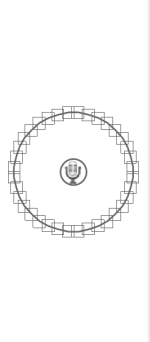Hello guys, I wondered if there is a somewhat accurate way to simulate the effect of a waveguide
on a tweeter's response, if I have accurate measurements of the tweeter?
I am trying to design a speaker using the Peerless DX25TG59-04, of which I have accurate measurements done by Heissmann-Accoustics
(https://heissmann-acoustics.de/en/test-vifa-peerless-xd-270-f4-dx25bg60-04/).
I want to combine it with a Visation WG 148-R, is there a way to simulate its effects?
I thought about using VituixCad's Diffraction tool with highest possible corner count, which is 36 and makes a somewhat round circle,
but I don't think it can be very accurate, in terms of what a horn does to directivity.
on a tweeter's response, if I have accurate measurements of the tweeter?
I am trying to design a speaker using the Peerless DX25TG59-04, of which I have accurate measurements done by Heissmann-Accoustics
(https://heissmann-acoustics.de/en/test-vifa-peerless-xd-270-f4-dx25bg60-04/).
I want to combine it with a Visation WG 148-R, is there a way to simulate its effects?
I thought about using VituixCad's Diffraction tool with highest possible corner count, which is 36 and makes a somewhat round circle,
but I don't think it can be very accurate, in terms of what a horn does to directivity.
Attachments
Member
Joined 2003
VituixCAD tool is not an advanced horn wave simulator. Simulation here requires advanced math tools, like ttako suggests. It is not a simple process, so unless you are planning to design a horn from scratch, best solution for DX25 and WG148 is to mount the tweeter on the waveguide, mount it on a baffle and take your own measurements of it.
Heissmann did test the DX25TG59-04 with the Monacor WG-300 waveguide (LINK). The WG-300 and WG-148 are very similar so I think looking at Heissmann's data would suffice. Both waveguides have the same size opening while the WG-300 is slightly larger (169 mm vs 150 mm). I think fabricating the adapter plate correctly is crucial. Heissman has instructions to build a WG-300 adapter or you can buy one from them. Their single test with a WG-148 used a Seas tweeter with a flat faceplate so no adapter was required. I did use some thin speaker gasket when I used the WG-148 and Seas tweeter to make sure they were no gaps at the tweeter/WG interface.
